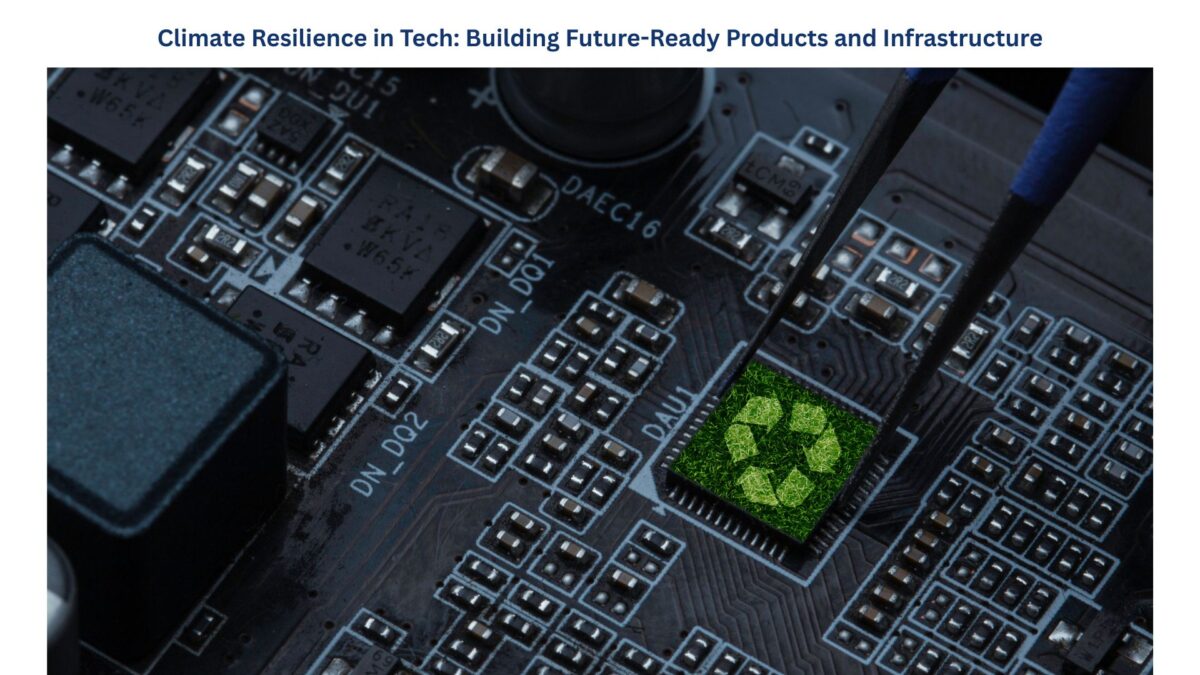Introduction: Defining Trustworthy Healthcare AI
Trustworthy artificial intelligence in healthcare entails much more than just precise algorithms and validation metrics. It entails developing and deploying AI systems that are clinically safe, technically robust, ethically sound, legally compliant, and manageable during their entire lifecycle.
These systems must include explicit accountability mechanisms while maintaining the trust of patients, clinicians, and healthcare institutions. The need of trustworthiness grows as AI has a greater impact on diagnostic choices, treatment suggestions, and resource allocation. Healthcare requires greater criteria than many other AI applications because human health, life, and dignity are at stake.
Trustworthy healthcare AI must function consistently across varied populations, preserve transparency in decision-making processes, integrate seamlessly into clinical workflows, and give clear channels for responsibility when outcomes fall short of expectations.
Core Principles: The Foundation of Trust
International frameworks such as FUTURE-AI, the World Health Organization recommendations, the EU AI Act, and India’s ICMR and IndiaAI governance principles all contribute to a common set of design principles. To ensure fairness and equity, systems must detect and minimize performance inequalities based on age, gender, socioeconomic position, region, and ethnicity, as well as track residual biases and their clinical implications.
Robustness and safety necessitate consistent performance despite data shift, noisy inputs, and unusual edge cases, as well as explicit clinical safety limitations and fallback modes. Explainability and openness necessitate clinically relevant explanations, thorough model cards, detailed datasheets, and full disclosure when AI tools influence patient care.
Traceability and auditability entail tracking data lineage, model versions, training runs, and all AI recommendations to allow for retrospective auditing and issue investigation. These principles translate abstract ethical ideals into specific technological and practical constraints.
Human-Centered Design and Accountability
Usability and human-centered design principles need collaboration with clinicians and patients, with workflow integration, acceptable cognitive load, and intuitive user experiences taking precedence over algorithmic sophistication. Healthcare AI must assist rather than disturb clinical reasoning, presenting data in ways that improve rather than complicate decision-making.
Accountability and governance structures explicitly allocate clinical, organizational, and vendor responsibilities while outlining redress methods and liability channels. When AI systems cause negative outcomes, patients and physicians require transparent methods for reporting harm, conducting investigations, and implementing remedies.
This responsibility goes beyond technical failures to include ethical breaches, equitable violations, and the erosion of patient autonomy. Establishing multistakeholder governance committees comprised of clinicians, ethicists, data scientists, patient advocates, legal experts, and operations people ensures comprehensive supervision and the capacity to approve, stop, or retire systems.
Problem Selection and Ethical Impact Assessment
The trustworthy AI lifecycle begins before any code is created, with proven clinical needs linked to measurable results and explicit intended-use statements describing target demographics, care environments, clinical tasks, and decision roles. This scoping phase necessitates thorough questioning about whether AI fills true care shortages or simply automates existing operations with no meaningful benefit.
Preliminary ethical and health equality effect studies look at the possibility of over-diagnosis, automation bias, which occurs when physicians defer too much to algorithmic recommendations, and burden shifting, which transfers labor to already overburdened healthcare professionals or vulnerable patients.
Teams must clearly evaluate how AI can worsen current inequities in access, quality, and outcomes. This fundamental effort defines success criteria beyond technical performance measures, basing development on genuine therapeutic value and equity considerations that govern all subsequent design decisions.
Data Strategy, Governance, and Compliance
High-quality, representative, consent-compatible data is the foundation of reliable healthcare AI, necessitating explicit data-use agreements, effective de-identification processes, and rigorous security controls. Data governance boards monitor data access using sophisticated logging systems and ensure compliance with health data legislation such as India’s ICMR guidelines and Europe’s GDPR and EU AI Act requirements.
Representative data sampling across demographic groups, geographic locations, and care settings keeps models from incorporating historical biases or underperforming in underserved populations. Documenting data provenance, inclusion criteria, known constraints, and potential biases facilitates downstream auditing and continuous quality evaluation.
Healthcare businesses must strike a delicate balance between data value for AI research and strict privacy protections and patient autonomy, using technical precautions such as differential privacy, federated learning, and secure enclaves where applicable.
Model Development with Built-In Safeguards
Implementing MLOps techniques with versioned datasets, reproducible pipelines, and logged model iterations improves technical rigor while allowing for retrospective study of issues that arise. Structured model cards capture design choices, training objectives, performance characteristics, and known limits in standardized formats that are easily accessible to both technical and clinical stakeholders.
Technical safeguards implemented during development include calibration checks to ensure predicted probabilities match actual outcomes, uncertainty estimation to quantify model confidence, out-of-distribution detection to identify inputs that differ from training data, and robust performance under realistic perturbations to simulate real-world variability.
These safeguards change models from black boxes to systems with measurable reliability bounds. Risk-based design controls use formal hazard analysis approaches to map potential failure modes to specific controls, such as hard-stops that preclude unsafe suggestions, conservative decision thresholds that encourage caution, and mandated human review for high-stakes decisions.
Clinical Validation Beyond Laboratory Metrics
Rigorous evaluation goes far beyond random train-test splits and aggregate accuracy metrics to include multi-site external validation testing model generalization across different healthcare settings, comprehensive subgroup analysis revealing performance disparities, and prospective clinical trials where the risk justifies the investment. Instead of focusing exclusively on statistical measurements such as AUROC, clinical utility assessment considers the influence of decisions on patient outcomes, workflow time changes, financial implications, and unforeseen consequences.
Human factors studies look on how doctors engage with AI tools in practice, highlighting differences between expected and actual use patterns. This evaluation step frequently reveals surprises such as automated bias, alert fatigue, workaround behaviors, and unexpected effects on team chemistry or care coordination. Regardless of budget constraints, prospective validation in real clinical situations remains the gold standard for high-risk applications.
Regulatory Landscape and Lifecycle Management
Healthcare AI systems must navigate complex regulatory frameworks that map tools to relevant device categories and risk classifications under regimes such as the EU Medical Device Regulation, the AI Act’s high-risk provisions, FDA Software as a Medical Device categories, and clinical decision support classification. Adaptive systems that learn from new data require Predetermined Change Control Plans that detail how the algorithm may evolve, what triggers retraining, and how changes are validated prior to deployment.
Total Product Lifecycle documentation documents the entire lifecycle of the system, from conception to retirement. India’s regulatory framework is developing, with the ICMR recommendations for AI in biomedical research and IndiaAI’s governance principles emphasizing responsibility and equity. To accommodate regulatory development while maintaining stringent safety and efficacy standards, organizations must interact with regulators proactively, participate in standard-setting processes, and build flexibility into their systems.
Deployment, Monitoring, and Continuous Vigilance
Integration with electronic health records and clinical systems necessitates controlled interfaces, safeguards against inappropriate use, and unambiguous human-in-the-loop checkpoints that preserve clinical judgment authority. User experience design requires structured inputs to reduce ambiguity, emphasizes uncertainty in model outputs, eliminates silent overrides of clinician judgments, and portrays AI recommendations as support rather than mandates.
Continuous post-market surveillance monitors performance drift as patient populations or clinical practices change, re-checks fairness metrics across demographic subgroups, implements incident reporting systems that capture adverse events and near-misses, and conducts periodic re-certification to ensure ongoing fitness for purpose. Organizations must be prepared to roll back or retire models if monitoring uncovers unacceptable performance degradation or emerging hazards. This continual vigilance understands that deployment is only the beginning, not the finish, of the trustworthiness journey.
Building and Sustaining Stakeholder Trust
Trust develops not only from technological features, but also from institutional and social circumstances such as company culture, communication techniques, and demonstrated dedication to patient welfare. Making AI use obvious in clinical encounters through transparent disclosure enables patients to ask inquiries and voice their preferences for algorithmic engagement in their care. Plain-language descriptions of benefits and constraints facilitate informed decision-making without requiring technical knowledge. Integrating AI into informed consent processes, where appropriate, supports patient autonomy while acknowledging algorithms’ increasingly important role in healthcare delivery.
Creating accessible redress procedures when AI does harm displays institutional accountability and a commitment to continuous improvement. Healthcare businesses must see trustworthy AI as an ongoing organizational commitment that necessitates continual investment in governance, training, monitoring, and stakeholder engagement, rather than a one-time technological accomplishment.
Conclusion: The Path Forward
Trustworthy healthcare AI requires approaching these systems as controlled socio-technical interventions that necessitate extensive lifecycle management rather than isolated model-training efforts. The growing international consensus on fairness, robustness, explainability, traceability, usability, and accountability provides practical frameworks for responsible development and deployment.
As laws tighten and stakeholder expectations rise, firms that actively infuse trustworthiness throughout the AI lifecycle will gain a competitive edge through patient confidence, clinician acceptance, and regulatory approval. The healthcare AI sector is at a critical juncture, and implementing strong trustworthiness practices now will define the course of algorithmic medicine for decades. Success necessitates ongoing collaboration across technical, clinical, ethical, legal, and operational realms, all guided by a common commitment to patient welfare and health equity as fundamental design goals.
Reach out to us at open-innovator@quotients.com or drop us a line to delve into the transformative potential of groundbreaking technologies. We’d love to explore the possibilities with you.















